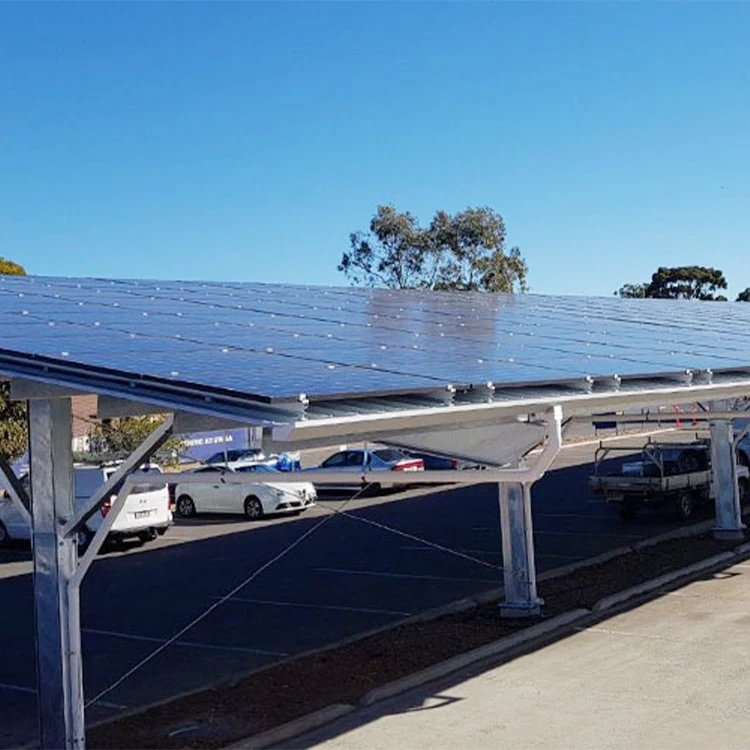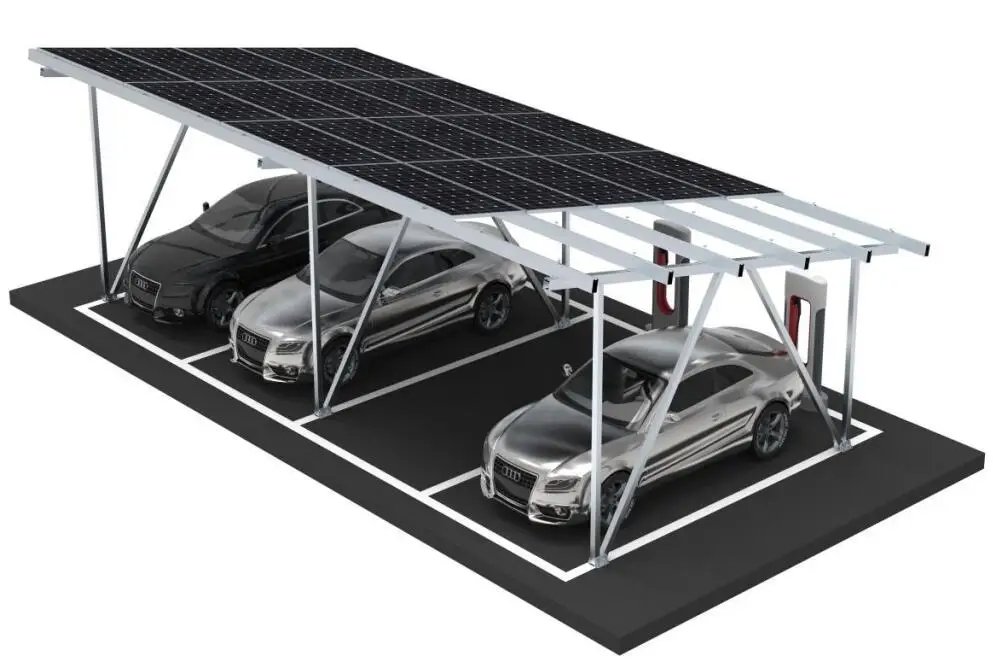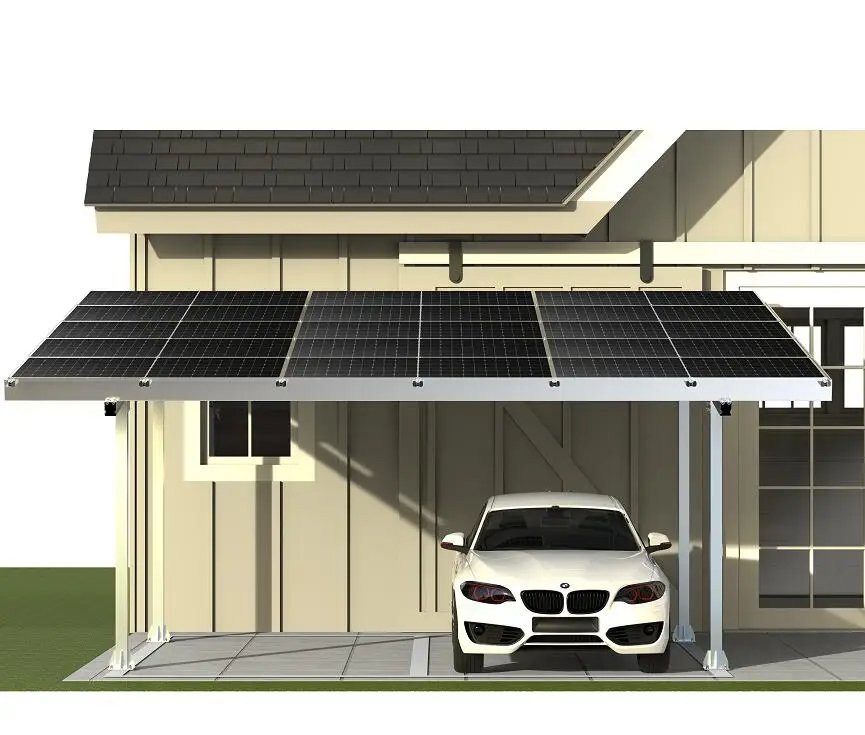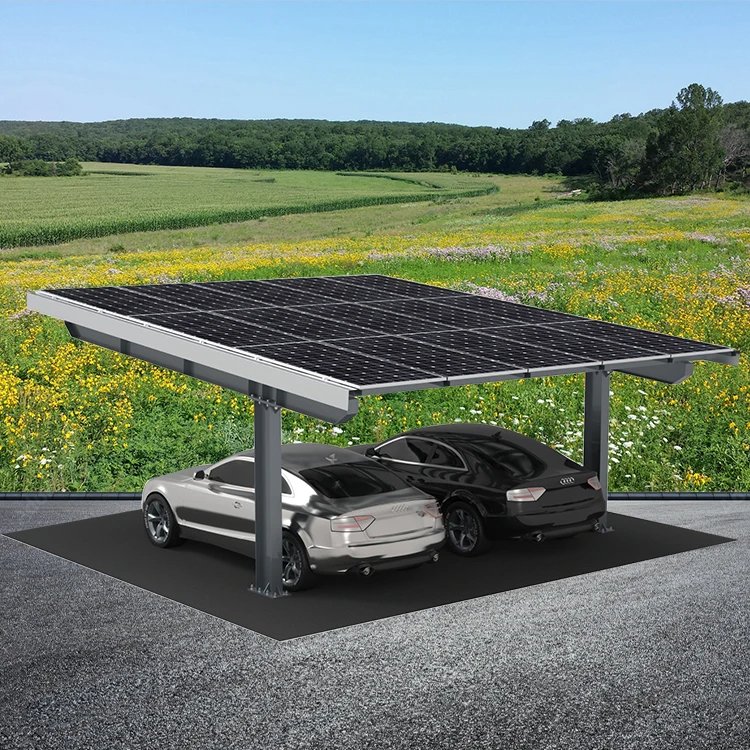-
2103 호실 322호 싱강 원 로드,하이창구,샤먼 푸젠,중국

How Much Does a Solar Carport Cost? Types, Benefits, and How to Avoid Regrets
For those who find it difficult to install rooftop solar panels or those whose roofs alone are not sufficient to meet their energy needs, a solar carport might be an excellent option.
However, many people hesitate after reading about the disadvantages or hearing opinions that suggest solar carports aren’t worth the investment.
This article explains how solar carports work, the different types, how much they cost, and key points to avoid regrets when introducing one to your property.
Table of Contents
What Is a Solar Carport?
A solar carport is a carport with solar panels installed on the roof. It protects your vehicle from the elements while allowing you to generate electricity for your home. It’s particularly useful for homes where roof space is unavailable or unsuitable for solar installations.
Types and Features
- Retrofit type: Solar panels are added to an existing carport. It’s relatively affordable but may be limited in terms of panel placement and structural compatibility.
- Integrated type: The panels themselves function as the roof. This type allows efficient use of space and a sleek appearance, although slight dripping between panels may occur due to structural gaps.
- Custom-designed type: Designed specifically for your space and conditions. It offers great flexibility but tends to be more expensive.

Installation Cost and Regional Variations
The cost of a solar carport varies significantly across different countries, influenced by local labor rates, regulatory requirements, material prices, and available incentives. Below is a comparison table to help you better understand the typical costs by region:
| Region | Estimated Installed Cost (5–7kW) | Notes |
|---|---|---|
| Japan | ¥1.9–2.4 million | Local subsidies in Kanagawa and Sapporo available (up to ¥200,000). |
| United States | $15,000–17,000 → $10,500–12,000 (with 30% ITC) | Federal tax credit and state-level rebates available. |
| European Union | €10,000–15,000 | Countries like Germany offer VAT exemptions for small-scale systems. |
| United Kingdom | £20,000 (for two-carport size) | Domestic solar installations benefit from 0% VAT until 2027. |
| Australia | AUD 12,000–16,000 | Supported by Small-scale Technology Certificates (STCs). |
These prices typically include the structure, solar panels, inverters, mounting system, installation labor, and permit-related costs, but exclude optional components like EV chargers or battery storage.
As a rule of thumb, solar carports tend to cost about 10–25% more than rooftop solar systems in the same region, due to the additional structural elements and foundations required.
The cost of a solar carport generally exceeds that of a standard carport or rooftop solar, as it includes the structure, panels, mounting, installation, and permits.
- In Japan, a typical two-carport setup (5–7kW) costs approximately ¥1.9–2.4 million.
- In the U.S., the same size may cost $15,000–17,000, which drops to $10,500–12,000 after applying the 30% federal tax credit (ITC).
- In the EU, average costs range from €10,000–15,000, while in the UK, it’s around £20,000 for a dual-bay setup.
- Australia reports costs between AUD 12,000–16,000 for a 6kW system.
These figures include everything from design to installation. Costs vary by labor rates, local regulations, material prices, and available incentives.

Benefits and Advantages
- Efficient use of space: Turn your driveway into a power source.
- Flexible orientation and angle: Unlike rooftop solar, panels can be optimally tilted.
- Fast installation: Most two-car systems can be installed in a single day.
- Lower electricity bills: Save about ¥3,000–5,000 per month depending on usage.
- Emergency readiness: Combine with a battery for blackout protection.
Disadvantages and Considerations
- Higher upfront cost than standard carports: A simple carport may cost ¥500,000, while a solar version typically exceeds ¥1.9 million.
- Maintenance costs: Expect annual upkeep costs of about ¥20,000–30,000.
- Shading issues: Structures or trees may cast shadows and reduce power generation.
- Permit requirements: In Japan, structures over 10㎡ require a building permit, costing an additional ¥150,000–200,000.
How to Reduce Initial Costs
- PPA model: Often used in commercial settings, where a third-party installs and owns the system. Users pay only for the electricity generated, with no upfront cost.
- Leasing model: Available to individuals as well. You pay a monthly lease while benefiting from electricity savings and potential feed-in tariffs.
- Check for local subsidies: While Japan does not offer national incentives yet, some local governments provide support. Always check with your municipality before installation.

Choosing the Right Installer
- Verify experience: Ask for past project photos and structural calculations.
- Check warranty coverage: Look for 10-year structural and 25-year module performance guarantees.
- Get multiple quotes: Comparing three or more quotes can help reveal fair pricing and scope.
Recommended hardware includes:
- 태양광 카포트 장착 시스템
- Aluminum Solar Carport Stand Structure
- Waterproof Solar Carport Mounting System
- Steel Double Solar Panel Carport Mounting
Conclusion
A solar carport is not just a car shelter—it’s an energy-generating structure that helps lower your power bills, adds shade, and boosts property value. While costs vary by region, it’s a viable and increasingly popular option for sustainable living. Evaluate your site and get trusted quotes to find a setup that matches your budget and goals.








